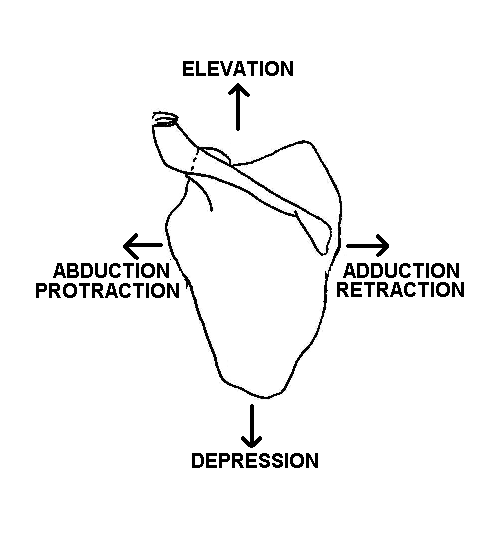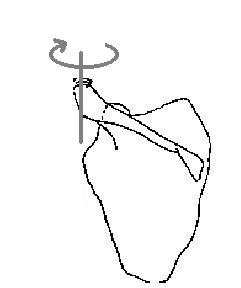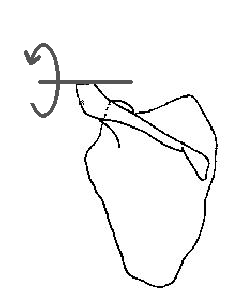The scapula's two degrees of freedom for translatory motion permit:
- ELEVATION or DEPRESSION
- ADDUCTION (also called RETRACTION)
or ABDUCTION (also called PROTRACTION)

The scapula's two degrees of freedom for translatory motion permit:
| 
|
|---|
Although a third degree of freedom is theoretically possible, the scapula does not move anteriorly or posteriorly on the thorax.
Notice that we don't identify axes for these motions. These motions are are "translations;" they don't occur around axes!
The scapula also has three degrees of freedom for rotatory motion; it can move in three planes around three axes:

| Scapular WINGING occurs around a vertical axis that passes through the AC joint. |
|---|

| Scapular TIPPING occurs around a lateral axis that passes through the AC joint. |
|---|

| Scapular UPWARD ROTATION and DOWNWARD ROTATION occur around an A-P axis that passes through
|
|---|